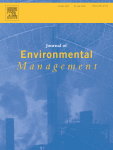Ver ítem
- xmlui.general.dspace_homeCentros Regionales y EEAsCentro Regional Patagonia SurEEA Santa CruzArtículos científicosxmlui.ArtifactBrowser.ItemViewer.trail
- Inicio
- Centros Regionales y EEAs
- Centro Regional Patagonia Sur
- EEA Santa Cruz
- Artículos científicos
- Ver ítem
Multi-taxon biodiversity assessment of Southern Patagonia: Supporting conservation strategies at different landscapes.
Resumen
In the last years, different spatial analyses were developed to support multi-taxon biodiversity conservation strategies. In fact, the use of species distribution models as input allowed to create spatial decision-support maps. Of special interest are maps of potential biodiversity (MPB), which define distribution and ecological requirements of relevant species and maps of priority conservation areas (MPCA), which define priority areas considering
[ver mas...]
In the last years, different spatial analyses were developed to support multi-taxon biodiversity conservation strategies. In fact, the use of species distribution models as input allowed to create spatial decision-support maps. Of special interest are maps of potential biodiversity (MPB), which define distribution and ecological requirements of relevant species and maps of priority conservation areas (MPCA), which define priority areas considering endemism and richness. The objective of this paper was to assess multi-taxon biodiversity based on two different spatial analyses and to test their efficiency to support conservation decision at Patagonia. We
computed 119 potential habitat suitability maps (one deer, birds, lizards, darkling-beetles, plants) with ENFA (Environmental Niche Factor Analysis) and 15 environmental variables, using Biomapper software. ENFA calculate two ecological indexes (marginality and specialization) which describe the narrowness of species niches and how extreme are the optimum environmental conditions related to the whole study area. These maps were combined obtaining a MPB and MPCA using Zonation software. Multivariate analyses were performed to compare methodologies, analysing environmental variables, ecological areas, forest types and protected areas.
Multivariate and ecological indexes showed that deer, lizards and darkling-beetles presented a narrow range, while birds and plants presented a large range of marginality and specialization mainly related to vegetation and climate. At provincial level, highest potential biodiversity and conservation priority values were related to shrublands and humid steppes. However, MPCA showed higher values related to forests and alpine vegetation due to endemism, while MPB showed differences among forest types. These analyses showed that the most valuable areas were not represented in the protected areas, however, many higher conservation priority values
were found inside the protected compared with unprotected areas. Different spatial decision-support maps presented similar outputs at provincial scale, but differed in the forest landscape matrix. Both methodologies can be used to plan conservation strategies depending on the specific objectives (e.g. highlighting richness or endemism).
[Cerrar]

Autor
Rosas, Yamina Micaela;
Peri, Pablo Luis;
Lencinas, María Vanessa;
Lizarraga, Leonidas;
Martinez Pastur, Guillermo José;
Fuente
Journal of Environmental Management 307 : 114578. (April 2022)
Fecha
2022-04-01
Editorial
Elsevier
ISSN
0301-4797
Formato
pdf
Tipo de documento
artículo
Palabras Claves
Derechos de acceso
Restringido
 Excepto donde se diga explicitamente, este item se publica bajo la siguiente descripción: Creative Commons Attribution-NonCommercial-ShareAlike 2.5 Unported (CC BY-NC-SA 2.5)
Excepto donde se diga explicitamente, este item se publica bajo la siguiente descripción: Creative Commons Attribution-NonCommercial-ShareAlike 2.5 Unported (CC BY-NC-SA 2.5)

